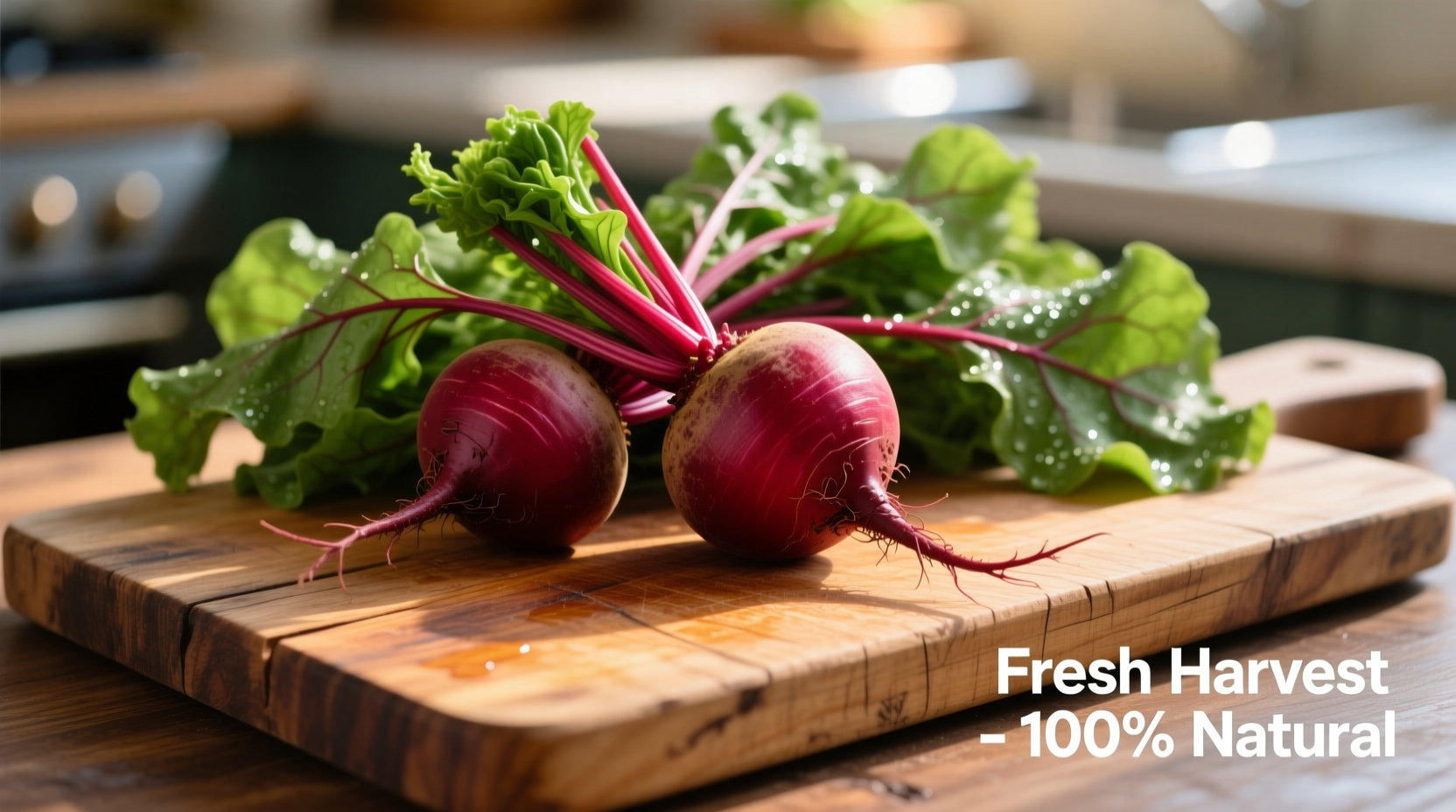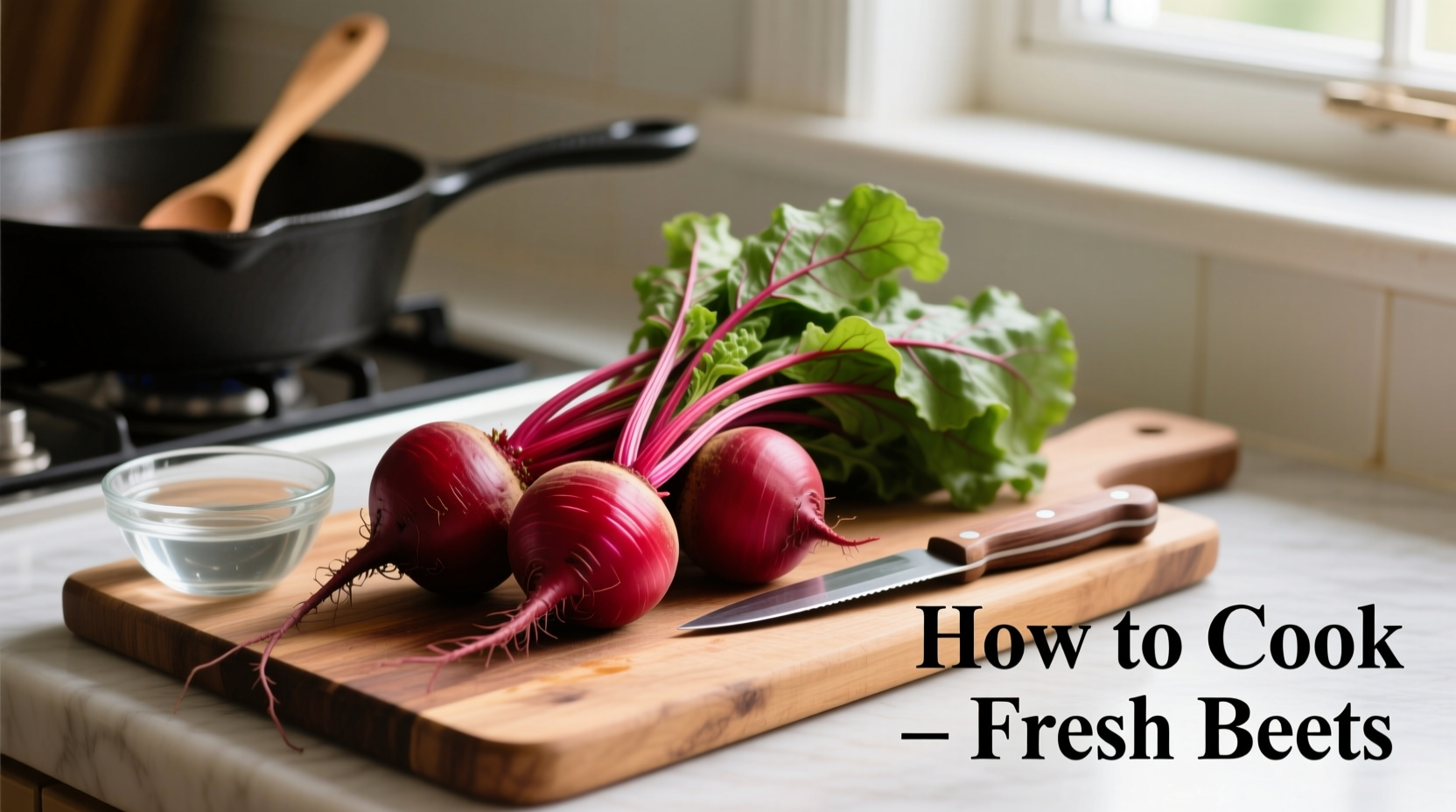Discover the foolproof techniques professional chefs use to transform earthy beets into vibrant, sweet side dishes that elevate any meal. Whether you're a beginner or looking to refine your skills, this guide reveals time-tested methods that solve common frustrations like uneven cooking, messy preparation, and disappointing flavor.
Selecting Your Beets: Quality Starts at the Market
Choosing quality beets sets the foundation for successful cooking. Look for firm roots with smooth skin and vibrant color—deep red varieties like Baby Boom or Chioggia (candy-striped) work equally well. USDA agricultural data shows beets harvested at peak maturity contain 20% more natural sugars than underripe specimens, directly impacting final sweetness. Avoid roots with soft spots or shriveled skin, which indicate age and moisture loss.
Store uncooked beets in a perforated plastic bag in your refrigerator's crisper drawer for up to two weeks. Remove greens immediately (they draw moisture from roots) and store separately—they'll wilt within days but make excellent sautéed greens.

Preparation Essentials: Minimizing Mess, Maximizing Flavor
Proper preparation prevents the dreaded "beet-stain" disaster while preserving flavor. Start by trimming tops to 1-2 inches above the root—this prevents excessive bleeding during cooking. Wear disposable gloves during handling; beet pigments contain betalains that stubbornly stain skin. For thorough cleaning, use a vegetable brush under cold running water rather than peeling first.
When cutting raw beets (for roasting or air frying), place them on a cutting board lined with paper towels to absorb excess juice. Professional kitchens often use dedicated "beet boards" to avoid cross-contamination of colors. If preparing multiple vegetables, always handle beets last to prevent staining other produce.
Cooking Method Comparison: Finding Your Perfect Technique
| Cooking Method | Time Required | Texture Result | Flavor Profile | Best For |
|---|---|---|---|---|
| Roasting | 45-60 minutes | Firm yet tender, caramelized edges | Concentrated sweetness, earthy depth | Salads, side dishes, meal prep |
| Boiling | 30-45 minutes | Uniform tenderness | Milder, slightly watery | Purees, soups, quick preparation |
| Steaming | 25-35 minutes | Firm throughout | Clean beet flavor | Preserving nutrients, delicate dishes |
| Air Frying | 25-35 minutes | Crispy exterior, tender interior | Intense sweetness, roasted notes | Snacks, modern presentations |
Mastering the Roasting Method: Chef's Preferred Technique
Roasting concentrates natural sugars through caramelization, creating the most complex flavor profile. Preheat oven to 400°F (200°C). Toss quartered beets with 1 tablespoon olive oil, 1 teaspoon salt, and optional aromatics like thyme sprigs. Wrap tightly in foil or place in an oven-safe dish with lid to trap steam.
Roast for 45-60 minutes until fork-tender. The precise time depends on size—small beets (1-2 inches) take 35-45 minutes, while larger specimens (3+ inches) require 55-65 minutes. Professional chefs test doneness by inserting a knife; it should meet slight resistance in the center. Rest cooked beets 5 minutes before handling—they'll be extremely hot.
Perfect Peeling: The Post-Cook Technique That Changes Everything
Peeling cooked beets is dramatically easier than raw preparation. After cooking, let beets cool until manageable (5-10 minutes). Using your thumb, gently rub the skin—it should slip off effortlessly like a jacket. For stubborn spots, use a paring knife with minimal pressure. This method preserves maximum flesh and minimizes waste compared to pre-cooking peeling.
This technique works because heat breaks down pectin in the skin-cell structure. Food science research from Cornell University's Department of Food Science confirms that beet skins reach optimal separation temperature at 185°F (85°C), explaining why partially cooled beets peel most efficiently.
Flavor Enhancement: Transforming Basic Beets into Culinary Stars
Elevate your cooked beets with professional flavor pairings. The classic combination of beets and goat cheese works because the cheese's tangy creaminess balances earthy sweetness. For modern presentations, try tossing warm beets with orange zest, toasted walnuts, and a balsamic reduction.
Acid is crucial for brightening flavors—toss sliced beets with lemon juice or apple cider vinegar immediately after cooking. This prevents oxidation (which dulls color) while enhancing natural sweetness through contrast. For meal prep, store cooked beets in their cooking liquid with a splash of vinegar to maintain vibrant color for up to five days.
Troubleshooting Common Beet Cooking Mistakes
Even experienced cooks encounter beet challenges. If your beets remain hard after cooking, they likely weren't uniform in size—always cut to similar dimensions. For watery texture, you've probably over-boiled; try roasting or steaming next time. When beets bleed excessively during cooking, you likely trimmed stems too short—leaving 1-2 inches prevents this.
For the cleanest results, use glass or stainless steel cookware—aluminum and cast iron can react with beet pigments, causing discoloration. When storing leftovers, keep beets in airtight containers away from light to preserve their vibrant hue for meal prep.
Frequently Asked Questions
Can I eat beet greens? Absolutely—they're highly nutritious and taste similar to chard. Sauté with garlic and olive oil for 3-5 minutes until wilted.
Why do my beets taste bitter? Overcooking causes bitterness. Remove beets from heat immediately when fork-tender. Smaller beets generally have sweeter flavor than larger, woody specimens.
How do I prevent staining my cutting board? Line surfaces with parchment paper or use disposable bamboo boards. For existing stains, rub with lemon juice and salt before washing.
Can I cook beets in an Instant Pot? Yes—pressure cook trimmed beets with 1 cup water for 15 minutes (high pressure), followed by 10-minute natural release. This method yields perfectly tender results in half the time.











 浙公网安备
33010002000092号
浙公网安备
33010002000092号 浙B2-20120091-4
浙B2-20120091-4